|

 
Today the lifesaving
community is gone. Although mariners use modern navigational aids
the island and its shoals continue to provide a hazard to shipping.
There was a shipwreck on the island in 1999.
Up to six persons live
on the island all year but the population increases to as many
as 20 as various scientific groups visit for short periods.
 The
main station provides the island's administrative centre, communications,
coordinates aircraft arrivals and departures and also maintains
the infrastructure such as generating electricity and waste disposal. The
main station provides the island's administrative centre, communications,
coordinates aircraft arrivals and departures and also maintains
the infrastructure such as generating electricity and waste disposal.
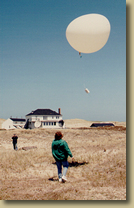 Here
are some of the current weather activities on Sable island: Here
are some of the current weather activities on Sable island:
•
Meteorological data •
Climatological
data •
Aerological
data (high altitude balloons launched twice a day) •
Lightning
detection network •
Air
Chemistry: carbon dioxide; carbon monoxide; isotopes of Oxygen
and Nitrogen; measurements of Aerosol particle concentration;
physical, chemical, and optical properties; monitoring emissions
from local activities •
Magnetic
observatory monitors the fine structure of the earth's magnetic
field
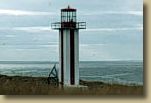 The
lighthouses are automatic now. This one runs on solar power, even
with Sable's 125 foggy days a year. The
lighthouses are automatic now. This one runs on solar power, even
with Sable's 125 foggy days a year.
Scientists come every
year, mostly to study the birds, seals and horses.
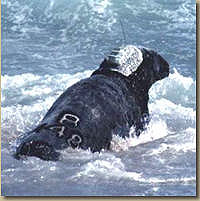
Tracking seals with a radio transmitter
and antenna.
|
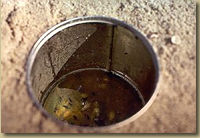
Museum scientists gather insects in
traps like this.
|
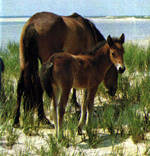
While individual animals live and die, the wild horse population
survives without human help.
Home
| Nature | History
| Sable Today | Fun
| About | Feedback
| Franšais
|









